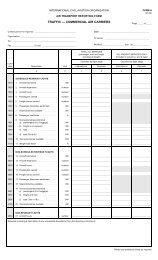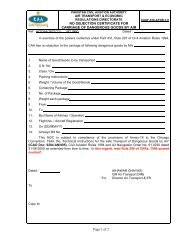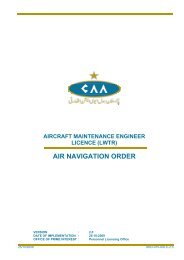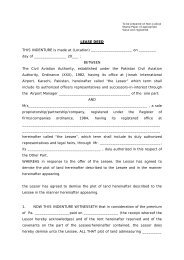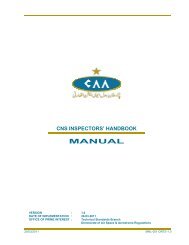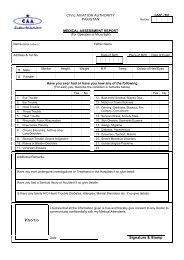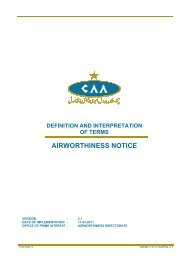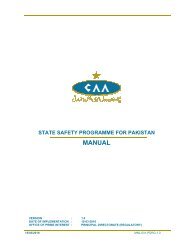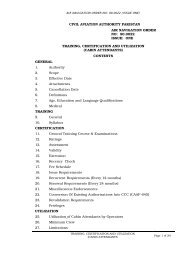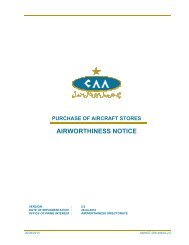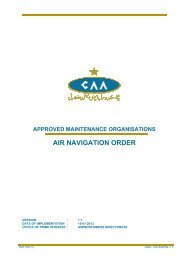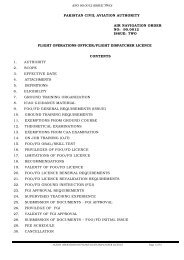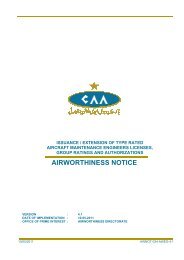Designated Check Pilot Manual - Civil Aviation Authority
Designated Check Pilot Manual - Civil Aviation Authority
Designated Check Pilot Manual - Civil Aviation Authority
Create successful ePaper yourself
Turn your PDF publications into a flip-book with our unique Google optimized e-Paper software.
(Pakistan <strong>Civil</strong> <strong>Aviation</strong> <strong>Authority</strong>)DCP <strong>Manual</strong>6.7 FLIGHT TESTS6.7.1 A flight check in accordance with CARs on an aircraft without an approvedFlight Simulation Training Device must be completed in an area where therequired approach aids are available. See section 6.11 for guidelines onconducting checks in the aircraft.6.7.2 The following mandatory items must be successfully completed:a. two take - offs;b. two landings, one must be asymmetrical;c. two types of instrument approaches, one must be carried out with asimulated asymmetric engine failure;d. a rejected take-off (as appropriate);e. a missed approach or rejected landing followed by a simulated enginefailure;f. emergency procedures sufficient to check the candidate's knowledge ofthe aeroplane;g. a circling procedure if the operator has circling limits below 1000 feet andthree miles visibility; andh. on initial PPC approaches to two different stalls:i. steep turns 45º of bank through at least 180º, and ( If applicable on A/CType).j. Holding.Unless required by the operator's procedures, co-pilots do not normallydemonstrate rejected take-offs. A verbal check of his duties during thisemergency condition will satisfy the requirement.Approach to stalls will be conducted on initial PPCs only, or if the DCPdeems a repeat is necessary, to establish the candidate's currency onthe aeroplane.Approach to stalls in an aeroplane will not be conducted at altitudes lessthan 5000 feet above ground/water or less than 2000 feet above a welldefinedcloud top with a horizon.1 st Edition Page 31 of 80 June, 20096.8 ASSESSMENT GUIDELINES6.8.1 It is impossible to define all instances when a particular exercise should berated “S”, “U” or “SB”. However, it is possible to examine each sequence ofa check ride and test its validity against the definition for each rating. Byapplying this test to all exercises, standardization can be achieved in checkride assessments. Each sequence of the check ride, including any errors ormistakes, shall be evaluated with respect to the rating definitions.Common errors and rating assessments are described by a variety ofadjectives. Terms such as (un)acceptable, (un)satisfactory, timely, safe,



